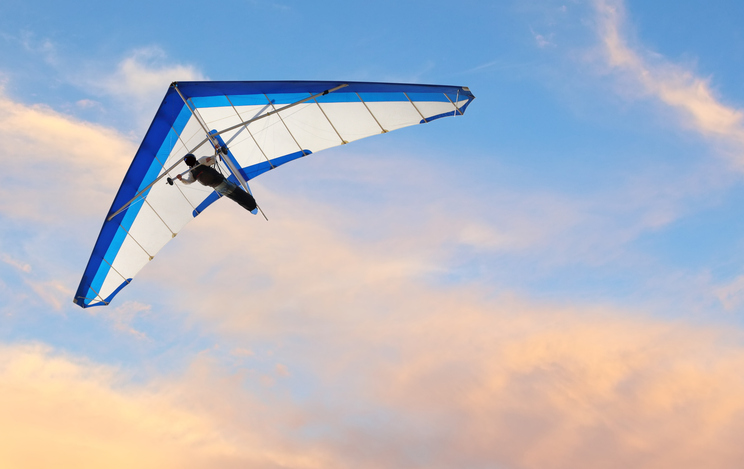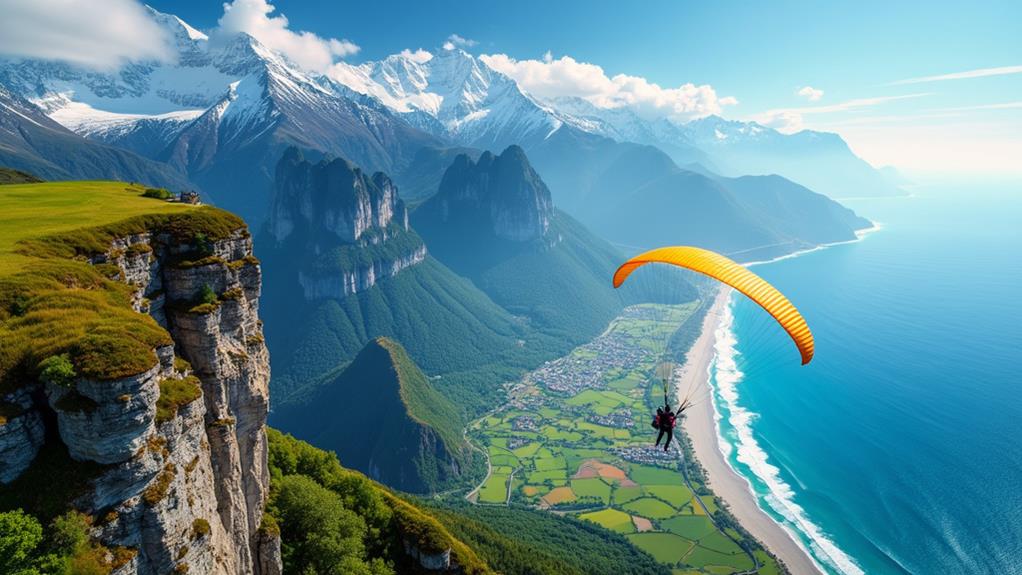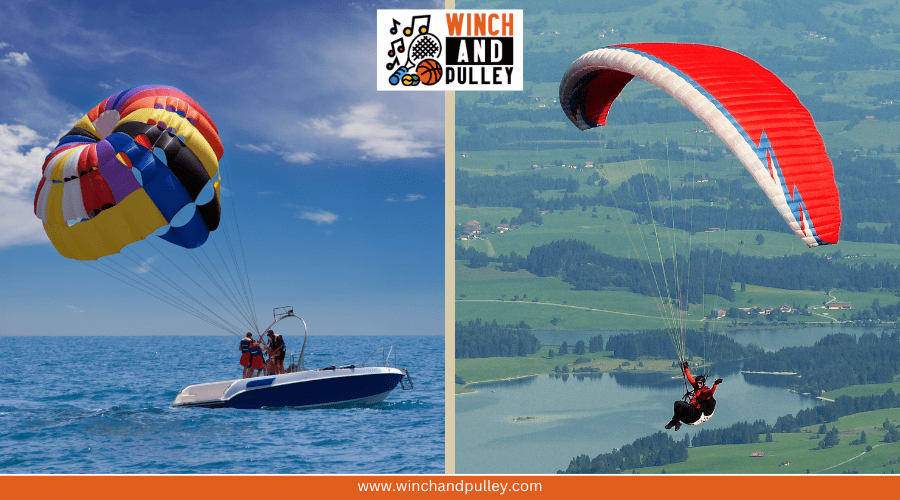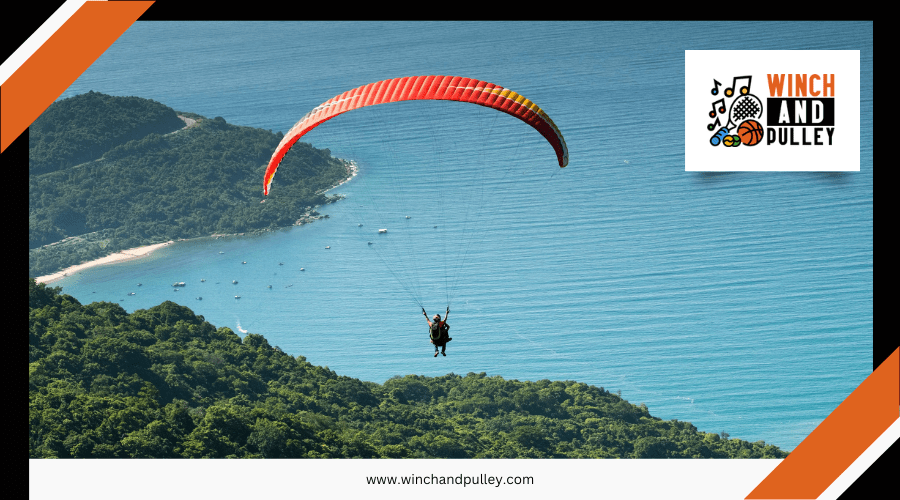A Beginner’s Guide to Paragliding

Paragliding is one of the most accessible ways to experience the thrill of flight. It allows you to glide through the air with minimal equipment while relying on wind and thermal currents to stay aloft.
For those new to the sport, the simplicity and freedom of paragliding make it an attractive option. This guide will take you through the basics of what paragliding is, the essential gear you need, and the steps to get started safely.
What is Paragliding?
Paragliding is a type of free-flight that uses a lightweight glider with no rigid structure. Pilots launch from hills or cliffs and use wind currents to stay in the air for extended periods. The equipment consists of a wing, also known as a canopy, a harness for the pilot, and a system of lines to control the glider's movement.
Unlike powered aircraft, paragliding relies entirely on natural forces. Pilots use thermals and wind patterns to gain altitude and glide across long distances. The simplicity of the sport makes it accessible to beginners while offering an exhilarating experience in the air.
Types of Paragliding
Paragliding offers a variety of experiences depending on the type of flight. Each type caters to different skill levels and interests, from casual tandem flights to competitive cross-country flying. Below are the main types of paragliding.
Tandem Paragliding
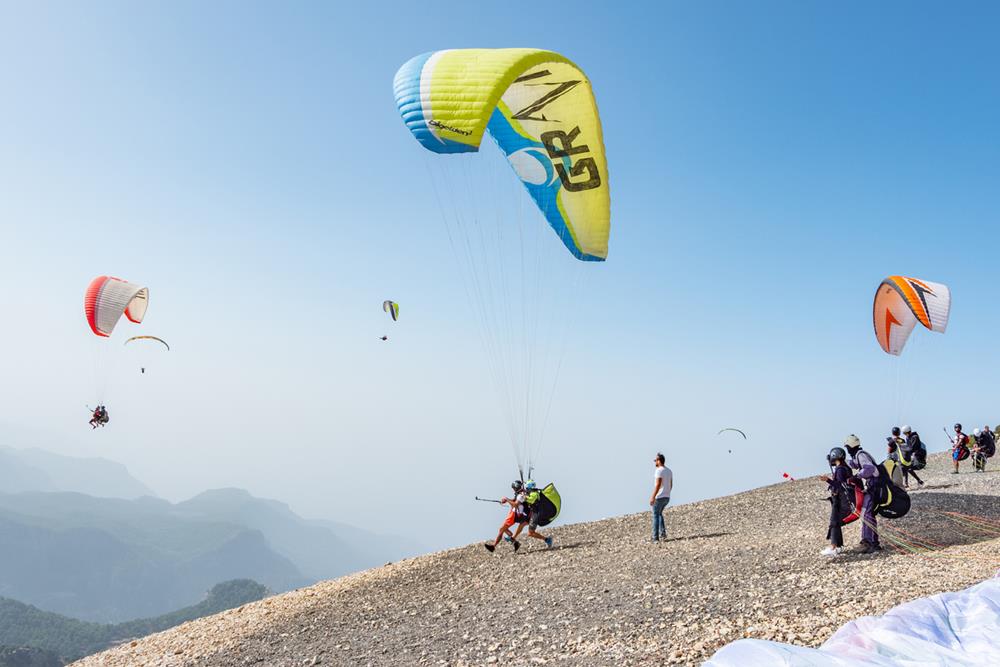
Tandem paragliding is ideal for beginners or those who want to experience flying without handling the controls. In this type of flight, a professional pilot flies with a passenger using a two-person glider. The pilot manages all the technical aspects, leaving the passenger free to enjoy the ride.
This type of paragliding is commonly offered at tourist destinations where people can experience flying for the first time. It is a safe and simple introduction to the sport, making it accessible for anyone interested in taking to the skies.
Solo Paragliding
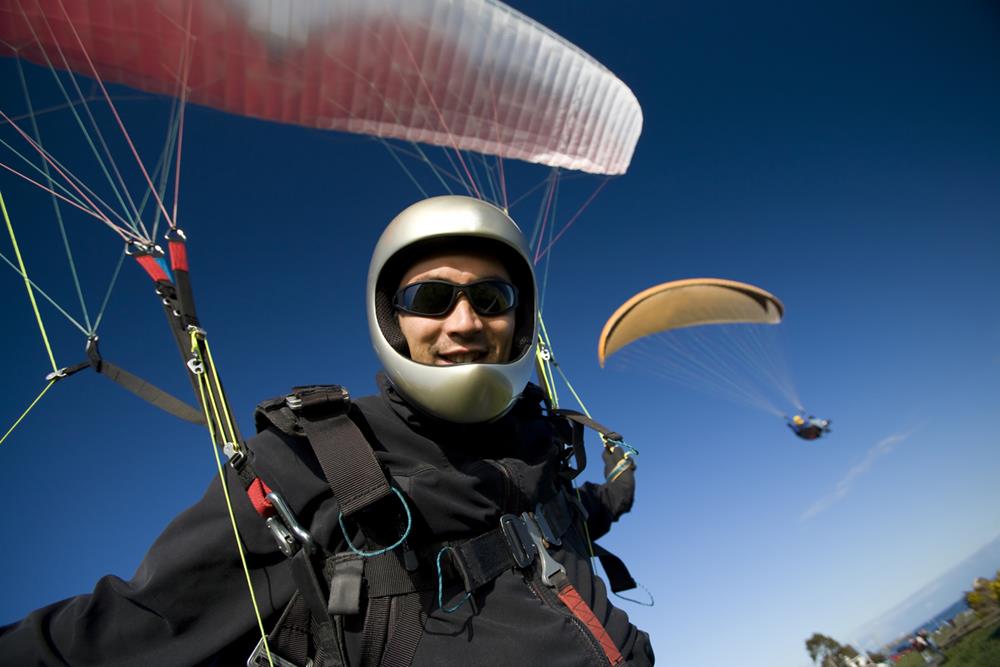
Solo paragliding is for those who want to fly on their own after completing proper training. Pilots control the glider entirely by themselves, using weight shifts and brake lines to steer and manage altitude. It requires more skill than tandem flights but offers a greater sense of freedom.
Most solo paragliders start with beginner courses that teach the fundamentals of launching, controlling the glider, and landing safely. Once certified, solo pilots can explore a variety of flying locations, from mountains to coastal areas.
Cross-Country Paragliding
Cross-country paragliding involves flying long distances using natural air currents like thermals to gain altitude and travel over vast areas. Pilots aim to cover as much ground as possible, often flying for hours and covering distances often or even hundreds of kilometers.
This type of paragliding is more advanced and requires knowledge of weather patterns and navigation. Cross-country pilots often participate in competitions, where distance and time are recorded to determine the best flight.
Acro Paragliding

Acro paragliding, short for aerobatic paragliding, focuses on performing stunts and tricks in the air. Pilots perform maneuvers like wingovers, spins, and loops, making it one of the most visually exciting forms of the sport. It requires specialized training and a lot of experience to master.
Acro paragliding is often done in designated areas and under controlled conditions due to the risks involved. Competitions and exhibitions allow acro pilots to showcase their skills and push the limits of what can be done in the air.
Getting Started: Training and Certification
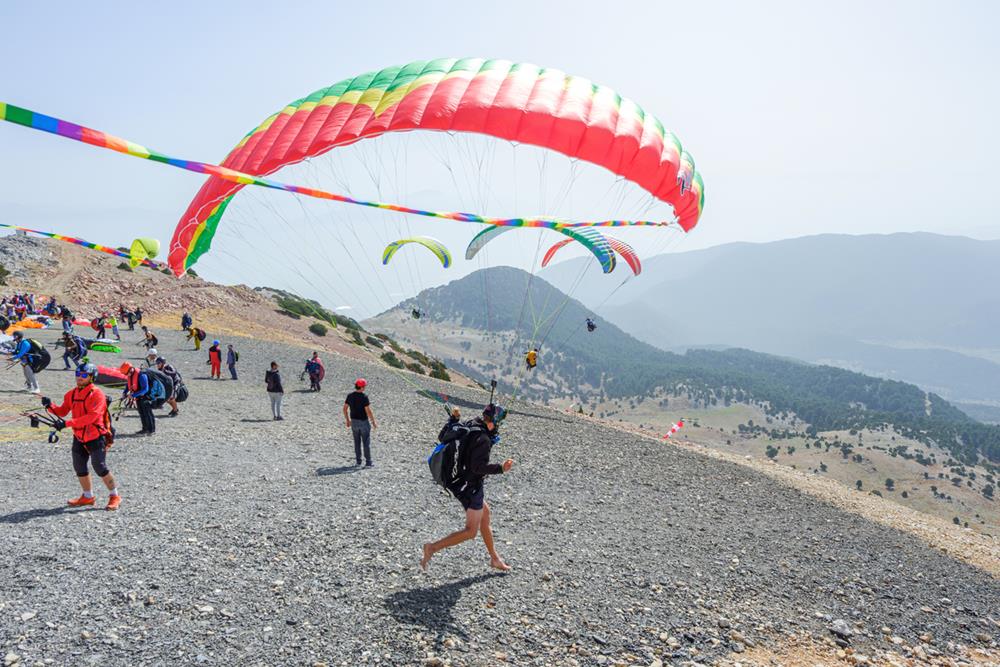
Getting started with paragliding requires proper training and certification to fly safely and confidently. It is essential to learn from experienced instructors and follow the necessary steps before taking to the skies.
Paragliding Schools
The first step in learning to paraglide is enrolling in a certified paragliding school. These schools provide professional instruction from qualified instructors who guide you through the basics of launching, flying, and landing. The training is hands-on, and you will practice ground handling before moving on to your first flight.
Choosing a reputable school is important as they will have the proper equipment and safety protocols in place. Look for schools certified by organizations like the United States Hang Gliding and Paragliding Association (USHPA) or similar groups in your country.
Beginner Courses
Beginner courses usually start with an introduction to the equipment and basic flying techniques. You will learn how to handle the paraglider on the ground, how to safely launch, and how to control your direction in the air. These courses often involve several supervised flights with an instructor guiding you step-by-step.
As you progress, you will also learn how to assess weather conditions and recognize safe flying environments. Once you complete the beginner course, you should be ready for solo flights, but only under specific conditions recommended by your instructor.
Certification and Licensing
In most countries, paragliding requires certification to fly independently. After completing your beginner training, you will need to pass practical tests to earn a certification or license. The certification process usually involves demonstrating your ability to fly safely, control the glider, and land properly.
Different levels of certification exist depending on your skill and experience. For example, in the US, you may begin with a P1 rating for supervised flying and work your way up to more advanced ratings like P2 or P3, which allow more freedom and access to different flying sites.
Basic Equipment for Beginners

When starting with paragliding, having the right equipment is essential for both safety and performance. Below is a list of the basic equipment needed for beginners.
Paraglider Wing
The paraglider wing is the most important part of your setup. It is designed to catch the wind and lift you into the air. Beginner wings are usually larger and more stable, offering greater control and slower speeds to help new pilots feel more secure. These wings are made from lightweight fabric like ripstop nylon, supported by internal ribs that create an aerodynamic shape.
As you gain experience, you may opt for more advanced wings that allow for faster speeds and sharper turns. However, starting with a beginner-friendly wing helps you get familiar with the basics of gliding without worrying about complex maneuvers.
Harness
The harness is where the pilot sits or lies during the flight. It connects you to the wing through a series of lines and provides the comfort and stability needed during long flights. Harnesses for beginners are designed to offer maximum support and protection, often with padding and a reserve parachute pocket.
When choosing a harness, comfort is key. You will spend extended periods in the air, so a well-fitted harness that reduces strain on your body is important. Many beginner harnesses also come with additional safety features like back protection to absorb any impact during landing.
Reserve Parachute
A reserve parachute is an essential safety feature for all paragliders. In the unlikely event that your main wing malfunctions or collapses, the reserve parachute can be deployed to bring you safely to the ground. While beginners may never need to use it, having one is a non-negotiable part of the gear.
Reserve parachutes are typically lightweight and packed tightly into the harness. They are designed to open quickly when deployed, allowing you to regain control in an emergency. Regular practice on how to deploy it ensures you know what to do if the situation arises.
Helmet and Protective Gear
Wearing a helmet is mandatory in paragliding as it protects your head during both takeoff and landing. Most paragliding helmets are lightweight and designed to cover the back of the head, providing more protection than standard bike helmets. In addition to the helmet, some pilots wear knee pads, elbow pads, or even full-body armor for added safety.
Protective gear also includes clothing appropriate for varying weather conditions. High altitudes can be cold, so wearing layers or windproof jackets is common. Gloves are another important item to prevent your hands from getting too cold while gripping the controls during flight.
Safety Tips for Beginner Paragliders
Paragliding is an exciting sport, but safety should always come first, especially for beginners. Learning a few key safety tips will help you avoid unnecessary risks and enjoy your flights with confidence.
Understand Weather Conditions
Weather plays a huge role in paragliding safety. As a beginner, it's important to fly in calm and predictable conditions. Wind speeds should be low, and thermals should be mild to avoid turbulence. Checking weather reports and consulting experienced pilots before flying is essential to making informed decisions.
Avoid flying in unstable or changing weather, as gusty winds or storms can make it harder to control your glider. Over time, you will learn to read weather patterns better, but always be cautious, especially in the early stages of your flying career.
Always Do a Pre-Flight Check
Before each flight, you should thoroughly check your equipment. Inspect the paraglider for any tears, knots, or issues with the lines. Make sure the harness is secure, and the reserve parachute is packed correctly. Even small issues can become serious in the air, so take the time to ensure everything is in working order.
A pre-flight checklist is a simple but effective habit to form. Experienced pilots follow this routine every time, and it's a practice that keeps both beginners and professionals safe. If anything feels off with your gear, do not take off until it is addressed.
Start with Supervised Flights
Beginner pilots should always fly under the supervision of an instructor during their early flights. This helps build confidence and ensures that any mistakes can be corrected quickly. Your instructor will guide you on takeoffs, turns, and landings, making sure you are flying in a safe and controlled manner.
Supervised flights are also a great way to get immediate feedback. Instructors can point out areas where you need improvement, helping you learn faster and avoid developing bad habits. Once you've gained more experience, you can gradually move to solo flights.
Know Your Limits
One of the most important things to remember as a beginner is to stay within your skill level. Trying to fly in challenging conditions or attempting advanced maneuvers too soon can be dangerous. Stick to beginner-friendly locations and avoid areas with strong winds or complex terrain.
It is natural to want to push your limits as you improve, but taking gradual steps in your progress is key to staying safe. Listening to your instructor and knowing when to stop or avoid certain conditions will help you avoid unnecessary risks.
Where to Fly: Ideal Locations for Beginners
Choosing the right location is essential for beginners to have a safe and enjoyable paragliding experience. The ideal flying spots offer stable weather conditions, easy takeoff and landing areas, and plenty of room to practice. Here are some tips on where to fly for those new to the sport.
- Gentle Slopes: Gentle hills with gradual slopes provide an easy launch for beginners. These locations help you practice takeoffs without the stress of steep cliffs. They also give you more time to adjust to flying at lower altitudes before trying more challenging environments.
- Wide Open Spaces: Look for sites that have wide, open areas with minimal obstacles. Avoid flying near tall trees, power lines, or crowded areas. Large open spaces make it easier to practice landing and allow you to make wide, gentle turns without worrying about hitting anything.
- Coastal Locations: Coastal sites often provide consistent winds and smooth thermals, making them ideal for beginners. The sea breeze is generally steady, giving you predictable flying conditions. Many paragliding schools are located near the coast for this reason, offering scenic views along with ideal training conditions.
- Certified Flying Sites: Many countries have certified paragliding sites that are regularly monitored for safety. These locations are maintained to provide safe takeoff and landing zones, with experienced pilots often available to offer guidance. Flying at certified sites gives you peace of mind, knowing the area is designed for safe paragliding.
Progressing in Paragliding: Moving from Beginner to Intermediate
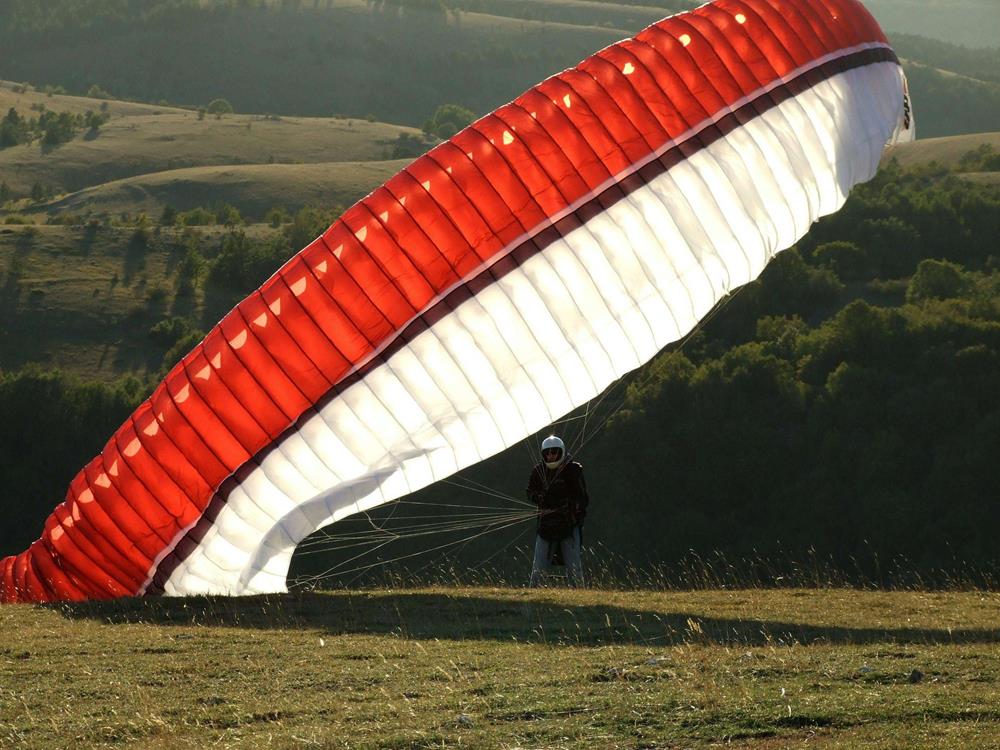
Once you've gained confidence as a beginner, it's time to start advancing your skills and moving toward intermediate paragliding. Check out these steps to help you advance in the sport.
Practice Advanced Maneuvers
As you progress, start practicing more advanced maneuvers like wingovers, thermalling, and ridge soaring. Wingovers involve making tight turns and banking your glider to one side, while thermalling allows you to gain altitude by circling in rising air. These skills require practice and precision but are essential for intermediate flying.
By mastering these maneuvers, you can fly for longer periods and handle more complex flying conditions. Make sure to practice in safe environments and always seek guidance from experienced instructors as you learn these techniques.
Upgrade Your Equipment
As you improve your flying skills, consider upgrading your gear. Beginner wings are designed for stability, but intermediate wings offer more speed and agility. These wings allow you to explore a wider range of flying techniques but require greater control and experience.
In addition to the wing, consider upgrading your harness for better comfort and maneuverability. Many intermediate pilots also invest in instruments like a variometer, which helps track altitude and thermal strength, giving you more control over your flight.
Fly in Different Conditions
Progressing as a pilot means flying in different weather conditions and terrains. While beginners should stick to calm and predictable environments, intermediate pilots are encouraged to experience more challenging conditions. Flying in stronger winds, thermals, and mountain environments will push your skills and make you a more versatile pilot.
Start gradually by flying in slightly stronger winds or at different times of the day when thermals are more active. Always assess your comfort level before pushing into more difficult conditions, and avoid taking unnecessary risks.
Join Paragliding Competitions or Events
Participating in paragliding events or friendly competitions is another way to advance your skills. These events offer the chance to fly with more experienced pilots and learn from their techniques. It also introduces you to the competitive side of the sport, where tasks like cross-country flying or precision landings are common.
Even if you're not ready for full-scale competitions, attending events helps you build connections in the paragliding community. This network is invaluable for learning, getting advice, and finding new flying locations to challenge yourself.
Conclusion
Paragliding is a thrilling way to experience flight, and with the right training and equipment, it's accessible to beginners. Starting with proper instruction, understanding the necessary gear, and learning key safety tips will help you get off to a confident start. As you progress, you'll discover new challenges and opportunities to improve your skills.

